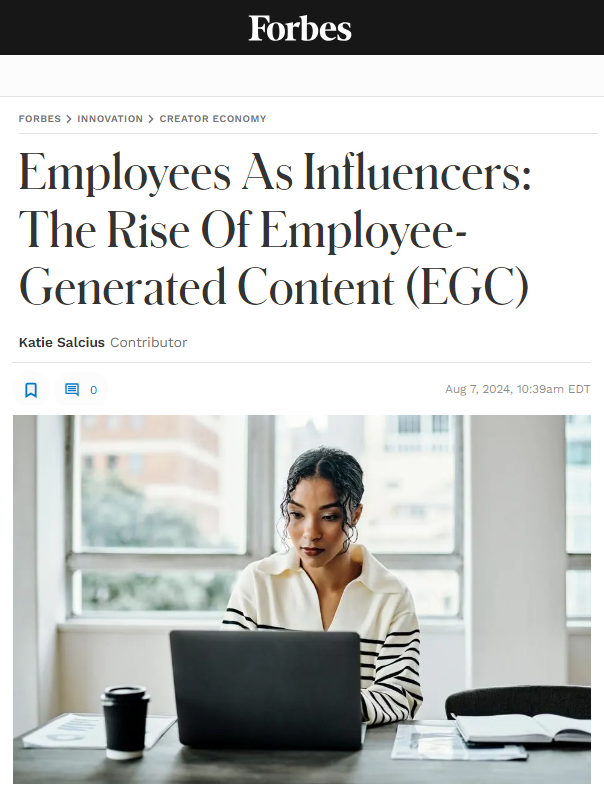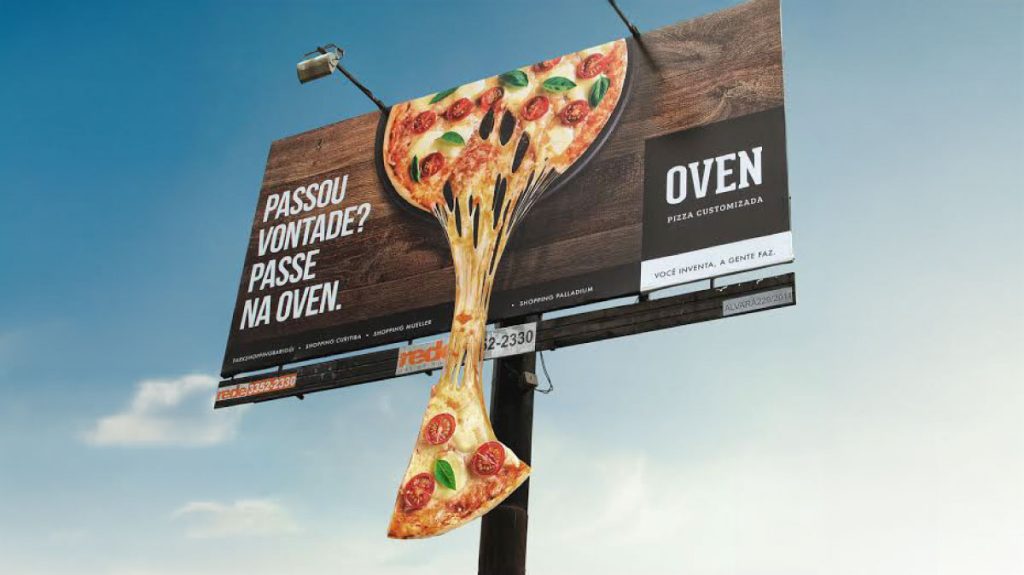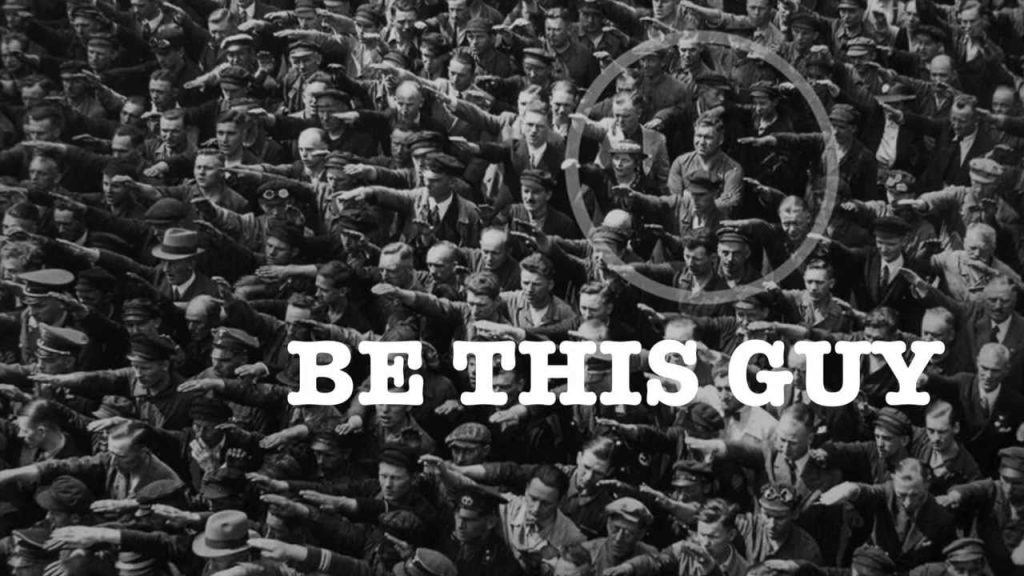
Love the concept by Katie Salcius in this Forbes article…
BUT….
There’s just one, teeny, tiny problem…
She says: “Employee as the influencer-style content, or more commonly referred to as employee-generated content (ECG) is the newest style of content sweeping the internet.
“No longer confined to traditional professional networks like LinkedIn, EGC is now capturing attention on Instagram, TikTok, and YouTube.”
👉 EGC Builds Trust & Authenticity
👉EGC is Cost-Effective
👉EGC is a Great Tool for Recruitment
👉EGC Helps Positively Improve Brand Reputation
Sounds great, so what’s the problem?

The main problem is that it’s nearly impossible to get your employees to post.
I’ve tried this strategy for nearly a decade. It’s great that it now has a name, but that doesn’t make it a real thing.
I’ve even thought about having this as a part of the job description and recruitment process – only hiring those who are comfortable (and hopefully good) at making content, and regardless of their position within the org, they are required to post.
It’s a metric that gets measured like any other job performance metric.
But then you open up a whole new set of challenges, many of which apply regardless:
❌ You risk diluting, or destroying, the brand’s cohesion, tone of voice,
and overall identity by forcing employees to share content, leading to inconsistent messaging and a weakened brand presence
❌ It becomes a huge logistical challenge to review, approve, monitor…
❌ Loss of authenticity as employees may not put in their best effort, it comes across as forced, or it doesn’t fully align with their personal values
❌ You would severely cut down your talent pool, and potentially settling on those who can do both content and their job, but perhaps they don’t do either as good as someone who just comes with exceptional job skills
So how do we do it?
How to Make EGC (Employee Generated Content) Work?
The truth is, making employee-generated content (EGC) work effectively requires more than just a mandate or a checkbox on a job description. It involves creating a culture where employees feel genuinely inspired and motivated to share their experiences. Here’s how you can approach it:
1. Empower, Don’t Force
Instead of requiring employees to post, give them the tools, resources, and creative freedom to share their authentic experiences. Create an environment where they feel proud to represent the brand because they believe in it, not because they’re told to.
2. Lead by Example
Encourage leadership to be active on social media, sharing their own insights and experiences. When employees see their leaders actively participating, they’re more likely to feel comfortable and inspired to contribute.
3. Make It Easy
Provide ready-to-share content, but leave room for personalization. Offer templates, guidelines, and best practices, but allow employees to put their own spin on it. This way, they can share content that feels authentic to them while staying aligned with the brand.
4. Recognize and Reward
Highlight and reward employees who naturally excel at creating content. Whether through public recognition, incentives, or opportunities for career advancement, showing appreciation for their efforts can inspire others to follow suit.
5. Create a Community
Foster a sense of community around EGC. Encourage collaboration, feedback, and support among employees. When they feel part of a collective effort, they’re more likely to engage and produce quality content.
6. Respect Boundaries
Not everyone is comfortable sharing their work life on social media, and that’s okay. Respect employees’ boundaries and recognize that their value to the company goes beyond their social media activity. By allowing voluntary participation, you’re more likely to get genuine, high-quality content.
This approach, while still very utopian, can help transform EGC from a forced initiative into a natural extension of your company culture. When done right, it can build trust, authenticity, and a strong brand reputation without compromising the individuality and comfort of your employees.


Continue reading:
If You’re Not Disrupting, You’re Standing Still
- Related post: The T-Shirt Theory of Branding
- Related post: The Power of Branding: John’s Family Premium Organic Garlic
- Related post: Why You Don’t Want to Run a Business that Relies Solely on Ads


Continue reading: What’s the ROI of a Billboard












